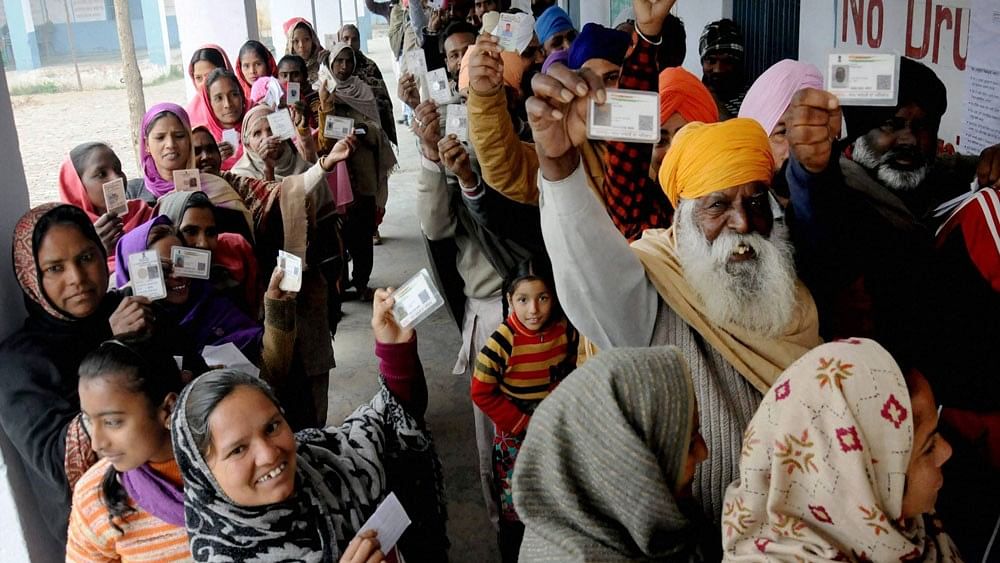
Punjab voters.
PTI file photo
The Lok Sabha elections in Punjab will be held in a single phase on June 1, 2024. Punjab has a total of 13 Lok Sabha constituencies.
With 24,433 polling stations across the state, Punjab has around 2,12,71,246 eligible voters, including 1,11,92,959 males, 1,00,77,543 females and 744 transgenders.
In the 2019 elections, the Indian National Congress led United Progressive Alliance won 8 out of 13 seats —Ludhiana, Anandpur Sahib, Patiala, Fatehgarh Sahib, Faridkot, Amritsar, Khadoor Sahib and Jalandharand, and gained a massive 40.12 per cent vote share.
Shirmoni Akali Dal and Bhartiya Janata Party fought together under the National Democratic Alliance and won 2 seats each.
The Shiromani Akali Dal (SAD) won from Bathinda and Ferozepur while BJP clenched the Hoshiarpur (Doaba) and Gurdaspur (Majha) seats.
Together, they got 37.08 per cent vote share, while SAD managed 27.76 per cent while BJP secured just 9.63 per cent.
Aam Aadmi Party, which fielded candidates in all 13 seats could win only the Sangrur seat.
In the 2023 by-election, AAP wrested the Jalandhar seat from the Congress.
This year, despite alliance in Delhi, AAP has decided to fight alone in Punjab while SAD is in wait-and-watch mode.
Punjab can broadly be divided into three regions — Malwa, Majha, and Doaba. While the Malwa region falls beyond the Sutlej river, the Doaba region falls between the Beas and Sutlej rivers, and Majha falls between the Ravi and the Beas rivers.
As far as the parliamentary polls are concerned, eight seats – Ludhiana, Bathinda, Ferozepur, Faridkot (SC), Fatehgarh Sahib (SC), Patiala, Anandpur Sahib and Sangrur fall in the Malwa region.
Two seats — Hoshairpur (SC) and Jalandhar (SC) - are in the Doaba region. The Majha region broadly comprises three parliamentary seats — Gurdaspur, Amritsar and Khadoor Sahib.
(With PTI Inputs)